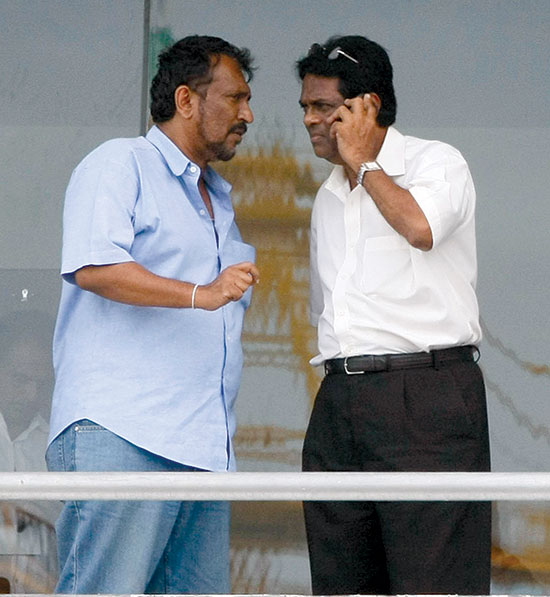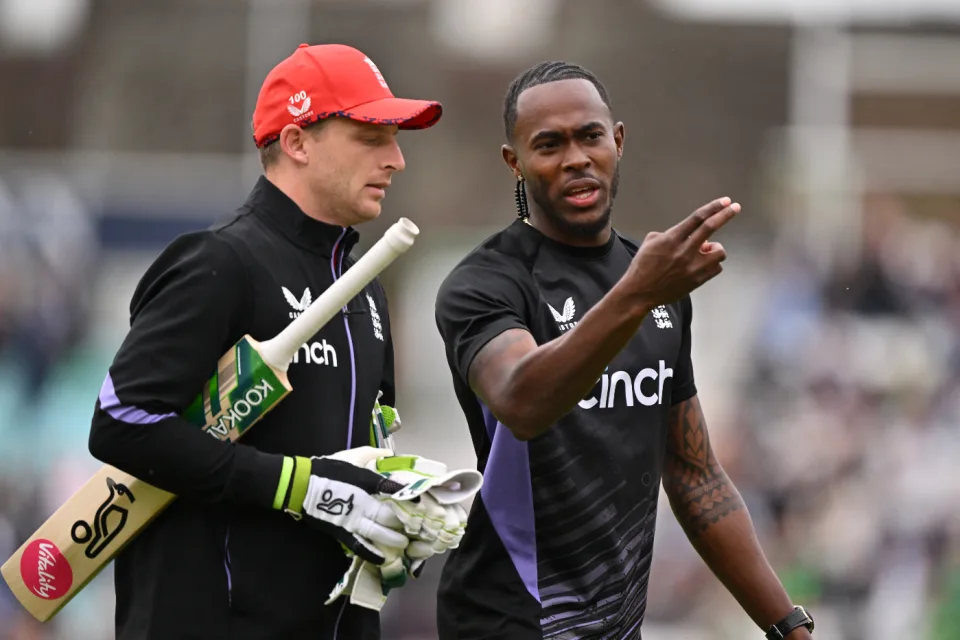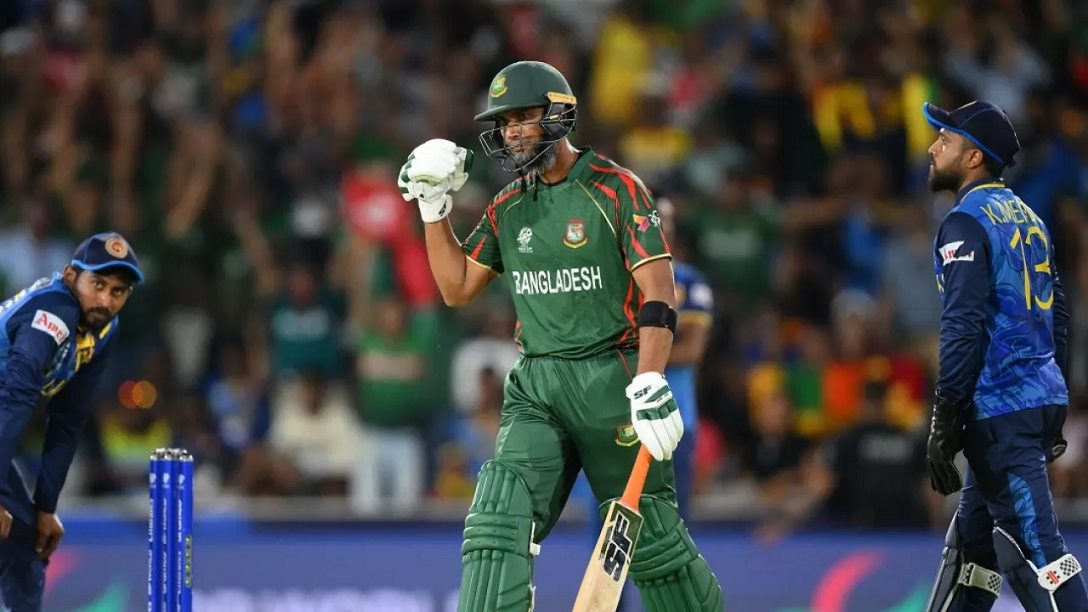Sports
Giving Suraj his due

by Rex Clementine
The first few Interim Committees that were appointed two decades ago were timely and catered to needs of those times. But subsequently, the Interim Committees became a tool for politicians to achieve their purposes. Former leg-spinner D.S. de Silva became the Chairman of the Cricket Interim Committee in the year 2009 in such a context. The press gave DS a hard time. It didn’t help and a few months into his term, newly appointed Sports Minister C.B. Ratnayake called the Cricket Board the third most corrupt institution in the country. The press went to town. Little did we realize that C.B. Ratnayake himself had packed the cricket board with kith and kin.
Given the picture painted by C.B. Ratnayake on the D.S. de Silva administration, the former captain’s every move was probed despite new highs for the national cricket team that included a first ever series win in Australia, reaching the finals of the T-20 World Cup at Lord’s and numerous bilateral series wins at home. Then, DS appointing two of his nephews – Suraj Dandeniya and Kapila Dandeniya for the World Cup organizing committee came in for criticism as well. But there are two sides to a story. Here’s that story. The untold story.
Both Suraj and Kapila had very good cricket pedigree. Suraj Dandeniya had represented S. Thomas’ College in the Royal-Thomian in 1976 and had gone onto play for SSC under Mr. Anura Tennekoon. Post cricket he had built up a successful business having started the Merc Shop that services and repairs European cars. He was heading the World Cup Organizing Committee. His cousin Kapila Dandeniya had represented Sri Lanka Under-19 and toured Australia under Aravinda de Silva’s captaincy.
Sri Lanka were supposed to hand over World Cup stadiums to the ICC by March 2010. However, there had been little progress made six months before the deadline to hand over the grounds. When ICC boss Haroon Lorgat rang up DS to express the governing body’s displeasure, Kapila and Suraj were in that room. DS was facing catch – 22. The nephews decided not to abandon their uncle and took it up as a challenge to complete the construction of the grounds.
One of the problems the press kept asking was why SLC did not want to play World Cup games at Dambulla and decided to build brand new stadiums. “We had to make sure that whatever the home games that were remaining in 2009 and 2010 went uninterrupted and we used Dambulla and even RPS for that purpose. We made a calculation that we would make a profit of US$ 24 million by hosting World Cup games. Our number of games increased due to Pakistan not able to host games. We ended up hosting a semi-final as well. We knew with the money we were getting, we could afford to build two new grounds,” Suraj opined.
There were allegations of not following tender procedures in constructing grounds. “We were running out of time. Pallekele Stadium, had we followed the tender process it would have taken one year. So we consulted the President’s office and we were told to give the undertaking to State Engineering Corporation to avoid all the trouble. That we did,” Suraj adds.
“We wouldn’t have completed these construction if not for State Engineering Corporation. They worked 24 hours, all seven days of the week, I must say.”
Suraj also revealed that SLC only paid for Pallekele and R. Premadasa Stadiums. The costs of Suriyawewa ground was taken up by the government. The Suriyawewa Stadium is a spacious venue built on a 47 acre land. Apparently the government had mooted ideas for other mega international sporting events as well apart from cricket.
“It was an enormous task. There were days I would get up at 4am in the morning and go to Suriyawewa. This was before the highway had come up and then travel up to Pallekele and conclude the day with an inspection of RPS. The construction of these stadiums should have started five years ago. We were left with an impossible task and we completed it. Had we failed, we would have regretted it for the rest of our lives. But the fact that we delivered gives me enormous amount of satisfaction,” says Suraj.
Why did Suraj not contest allegations of corruption in building stadiums at that point of time. “To be honest, we were running against the clock. We did not simply have the time to stop and counter all allegations. Obviously these were coming from disgruntled parties. From a very early moment we had decided that we were not going to deviate the focus from the job at hand. We knew it was a massive task,” explains Suraj.
What about stories that SLC went bankrupt after the World Cup. “We left SLC soon after the World Cup. We didn’t have time to counter these claims. But the fact of the matter is there were two audits conducted one of them by the Auditor General and we were given all clear. That’s what matters at the end. We are not crooks. We care for the game deeply. We wouldn’t do anything to harm the sport that we love so dearly.”
The construction of the stadiums weren’t without challenges. Apparently the ICC rejected Suriyawewa and RPS grounds 48 hours before the tournament got underway. There were concerns of safety of players and spectators, an area the ICC is very particular about. Immediately, SLC bigwigs headed to Temple Trees to break the news to President Mahinda Rajapaksa. The President took steps to dispatch Road Development Authority to the two grounds. Within the next 24 hours, the RDA ensured that ICC’s requirements were met.
“I remember taking Chirs Tetley, the Head of ICC Events in a helicopter to Suriyawewa and he told me that I am taking him to a different ground. It was truly remarkable what the RDA did to address ICC concerns,” Suraj recalls.
“The press was giving us such a torrid time. We didn’t get rattled. I don’t see the pressure that was put on us being put on the Pollonaruwa ground project that was started and no one knows what is happening to it now.”
“My biggest satisfaction is to see games being played in these three beautiful grounds. I take enormous pride that I contributed for these projects. I must tell you that we had a brilliant team. It was a superb team effort. Every single guy burned the mid night oil to see through this. We did it in ten months. As a result we have three beautiful stadiums, Sri Lanka were able to host the 2012 T-20 World Cup. We can also host future ICC events without any hassle,” Suraj goes onto say.
Suraj and the team deserves credit no doubt. Having toured other cricket venues that were built for the 2011 World Cup like Eden Gardens in Calcutta, Wankhede in Bombay, Feroz Shah Kotla in Delhi and Chinnaswamy Stadium in Bangalore, you can vouch that the three Sri Lankan venues are architect marvels. Pallekele and RPS in particularly can cater to 400 journalists, a capacity that no other cricket ground in the world is capable of; not Lord’s, not MCG, not Newlands, not Eden Gardens.
Sports
England face Australia in the battle of champions

The first truly heavyweight clash of this expanded T20 World Cup format comes freighted with both history and subplots. A rematch of the 2010 World T20 final at Kensington Oval, the match pits Jos Buttler’s defending champions – who are aiming to become the first team to retain the trophy – against the Australian winning machine, victors at the 2021 edition and current world title-holders in Test and ODI cricket. And that’s before you throw in the Ashes for afters.
Already there is added pressure on England, after the rain in Bridgetown led to a share of the points in their opener against Scotland (and that having conceded 90 runs from 10 overs without taking a wicket in a tepid bowling display). Lose to their oldest rivals and it will leave their Super 8 prospects open to being waylaid by the perils of net run-rate calculations, or worse.
The Scotland match was the third abandonment in five suffered by England, after a rain-affected home series against Pakistan, which has clearly hampered their readiness for this campaign after almost six months without playing T20 together. It does not take much for a side to click in this format – and England looked in decent shape when they did get on the field against Pakistan – but Buttler will be anxious for things to go their way on Saturday, if only to avoid further questions referencing the team’s disastrous ODI World Cup defence last year.
Australia, under the laidback leadership of Mitchell Marsh would love nothing more than to add to the English sense of jeopardy – having helped bundle them out of the tournament in India on the way to taking the crown. Their head to head record is less impressive in T20 however, with England having won six of the last seven completed encounters, as well as that 2010 final.
Despite a wobble with the bat, Australia avoided mishap against Oman earlier in the week, the experience of David Warner and Marcus Stoinis shining through in difficult batting conditions. Surfaces in the Caribbean – not to mention those games staged in the USA – have already had teams scratching their heads; rather than the “slug-fest” England had prepared for, following a high-scoring tour of the Caribbean in December, it looks as if boxing smart may be the way to go.
Speaking of Warner, this could be the last time he faces up against England in national colours – and another match-winning contribution would likely reduce the chances of them meeting again in the knockouts. On the other side of the card is Jofra Archer, fresh from an emotional maiden outing at Kensington Oval and ready to take on Australia for the first time in any format since 2020. Can Mark Wood fire up England’s campaign, as he did during last summer’s Ashes? Will Pat Cummins be back to harass the old enemy once again? Seconds out, it’s almost time to rumble.
Cummins is set to return after being rested for the Oman game, which saw Mitchell Starc leave the field with cramp. Starc is understood to be fine and could keep his place – which would likely see Nathan Ellis miss out. Marsh is still not fit to bowl, with Australia likely to continue with the allrounder combination of Stoinis and Maxwell to give them cover.
Australia (probable XI): David Warner, Travis Head, Mitchell Marsh (capt), Glenn Maxwell, Marcus Stoinis, Josh Inglis (wk), Tim David, Pat Cummins, Nathan Ellis/Mitchell Starc, Adam Zampa, Josh Hazlewood
The one change England may consider is Reece Topley coming in for Wood, with the expectation that there will be some rotation among the seamers through the course of the tournament.
England (probable XI): Phil Salt, Jos Buttler (capt & wk), Will Jacks, Jonny Bairstow, Harry Brook, Liam Livingstone, Moeen Ali, Chris Jordan, Jofra Archer, Adil Rashid, Reece Topley/Mark Wood
[Cricinfo]
Sports
South Africa up against their bogey team in batter-unfriendly New York

Once is coincidence, twice is a clue, and three times is proof.
To paraphrase Agatha Christie, that is the narrative around South Africa’s meeting with Netherlands at this T20 World Cup.
The Dutch beat South Africa at the 2022 tournament and ended their semi-final hopes in a match where South Africa appeared to be sleep walking, and then beat them again at the 2023 ODI World Cup, where they exposed South Africa’s vulnerability in the chase. If they to do the treble, not only will Netherlands take the lead in Group D, but they will offer conclusive evidence of the threat they pose to Full Members, especially South Africa.
Of course, it will take some doing after South Africa’s opening performance against Sri Lanka, where they reduced their opposition to their lowest T20I total and chased it down in fairly straightforward fashion thanks to the most stable middle-order of their white-ball era. In Aiden Markram, Tristan Stubbs, Heinrich Klaasen and David Miller, South Africa have bankers and big-hitters and, for this match, they also have the advantage of experience. They’ve already played at Eisenhower Park, and have first-hand knowledge that run-scoring doesn’t come easily;Klassen said they are prepared to use their “cricket brains” and play “smarter cricket”.
But the conditions could be good news for Netherlands, who are not naturally a line-up of big hitters and build their innings on a foundation of turning ones into twos. In other words, they tend to take a slightly more conservative approach to batting, which may work well here, but they’ll be wary of the uneven bounce of the surface and will have to come up with plans to counterattack especially against South Africa’s seamers. Their own bowlers were exemplary in Dallas and will look to build on that performance against a line-up that will likely be more proactive than Nepal’s, but who they have managed to keep quiet not once, but twice in the past. Third time’s the charm, they say.
Anrich Nortje’s stunning return to form against Sri Lanka means South Africa may not have to tinker with the bowling combination, and Gerald Coetzee and Tabraiz Shamsi may have to wait their turns to get a game. The batting line-up should be unchanged, with no space for Ryan Rickelton yet.
South Africa: Quinton de Kock (wk), Reeza Hendricks, Aiden Markam, Tristan Stubbs, Heinrich Klaasen (wk), David Miller, Marco Jansen, Keshav Maharaj, Kagiso Rabada, Ottneil Baartman, Anrich Nortje
Conditions in New York may tempt Netherlands to include an extra seamer and they have Kyle Klein in their squad. But it could come at the expense of a shortened batting line-up and they may not want to risk that.
Netherlands: Michael Levitt, Max O’Dowd, Vikramjit Singh, Sybrand Engelbrecht, Scott Edwards (capt, wk), Bas de Leede, Teja Nidamanuru, Logan van Beek, Tim Pringle, Paul van Meekeren, Vivian Kingma
[Cricinfo]
Latest News
Mustafizur, Rishad, Hridoy dazzle in Bangladesh’s tight two-wicket win over Sri Lanka

Nuwan Thushara’s last over brought Sri Lanka screaming back into the match,as he first bowled Rishad Hossain, and then nailed Taskin Ahmed in front of the stumps with a pinpoint swinging yorker. This left Bangladesh eight wickets down, with 12 runs still to get.
However, the experienced Mahmudullah was at the crease for Bangladesh, and despite some further nervy moments, pushed Bangladesh across the line off the last ball of the 19th over.
But this was a match chiefly decided by Bangladesh’s own outstanding bowling. Mustafizur Rahman was the best among them, using shorter lengths and his cutters efficiently, to claim figures of 3 for 17. Rishad Hossain’s three-for through the middle overs also kept Sri Lanka quiet.
Mustafizur was instrumental in Sri Lanka’s downward spiral through the middle overs, which culminated in a crash-and-burn end. Ultimately, their inability to find boundaries, or even rotate strike against good Bangladesh bowling resulted in their downfall. A score of 125 for 9 always seemed poor on a decent pitch, even if their bowlers made a match of it in the end.
Brief scores:
Bangladesh 125 for 8 in 19 overs (Towhid Hridoy 40, Litton Das 36; Dhanajaya de Silva 1-11, Nuwan Thushara 4-18, Wanidu Hasaranga 2-32, Matheesha Pathirana 1-27) beat Sri Lanka124 for 9 in 20 overs (Pathum Nissanka 47, Dhananjaya de Silva 21; Tanzim Hasan Sakib 1-24, Taskin Ahmed 2-25, Mustafizur Rahman 3-17, Rishad Hossain 3-22) by two wickets
[Cricinfo]





















